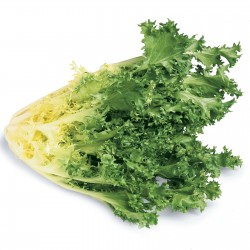Menu
-
MenuInapoi
- Home
-
Categorii
-
-
Categorii
-
Semințe de legume
-
Soiuri după țară
- Soiuri din Armenia
- Soiuri din BiH
- Soiuri din Croația
- Soiuri din Franța
- Varieties from Germany
- Varieties from Greece
- Varieties from Hungary
- Soiuri din India
- Varieties from Italy
- Soiuri din Japonia
- Soiuri din Macedonia de Nord
- Varieties from Peru
- Varieties from Russia
- Varieties from Serbia
- Soiuri din Slovenia
- Varieties from Spain
- Varieties from Thailand
- Soiuri din Turcia
- Varieties from USA
- Semințe de roșii
- Semințe de porumb
- Familia Dovleac
- Familia Bean
- Semințe de castraveți
- Seminte de ardei gras
- Familia morcovului
- Familia ceapa
- Semințe de salată verde
- Familia cartofilor
- Familia de varză
- Semințe de ridiche
- Familia sfeclei
- Semințe de pepene verde
- Semințe de pepene galben
- Semințe de conopidă
- Familia de floarea soarelui
-
Soiuri după țară
- Semințe de fructe
- Seminte de Chili Peppers
- Semințe de plante medicinale
- Semințe de plante cățărătoare
- Copaci - Arbust - Semințe
- Semințe de palmier
- Semințe de ierburi ornamentale
- Semințe de tutun
-
Semințe de legume
-
-
-
-
- PRODUSE NOI
- Crează un cont
- Livrare - Plata
- FAQ
Last Product Reviews
These peppers came all the way from eastern Europe and took a while at no f...
By
 Fitim Berani on 21/09/2023
Fitim Berani on 21/09/2023
Verified Purchase
Last customers
- Sylvie, Neyruz, Switzerland
- Costas, LARNACA , Cyprus
- Adrian, Ingolstadt, Germany
- Arno, Ehrenkirchen, Germany
- Josef, Hochdorf-Assenheim, Germany
- Ricard, Sant Celoni, Spain
- CORINNE, NOTRE DAME DE LONDRES, France
- william, Dun, France
- Aymeric , Saint tricat, France
- Julien, Scionzier, France
- Davide, London, United Kingdom
- Maureen , Enniscorthy Co Wexford , Ireland
- Ewa, Galway, Ireland
- Alex, GORDONA, Italy
- Sonia, Minervino di Lecce, Italy
- Fulvio francesco, Santa Domenica Talao, Italy
- Paul, St. Vigil in Enneberg (BZ), Italy
- Kimberly, Victoria, Gozo, Malta
- Stef, Waalwijk, Netherlands
- Lasse, 2900, Norway
- Grzegorz, Tuchom, Poland
- Ricardo jorge , Viseu , Portugal
- ionescu, valu lui traian, Romania
- Tanja, Beograd, Serbia
- Radosav, Kragujevac, Serbia
- Zoran, Vinca, Serbia
- Alaa, Alwajh, Saudi Arabia
- Henrik, Åkarp, Sweden
- Dušan, KRAVANY NAD DUNAJOM, Slovakia
- Pete, Cleves, United States
Sunt 129 produse.
Se afiseaza 25-36 din 129 produs(e)

Această plantă are fructe uriașe
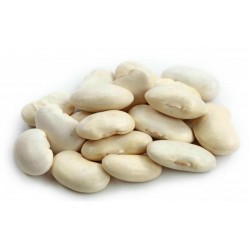
Giant White LIMA Bean Seeds
Pret
1,95 €
SKU: P 258
Seeds Gallery Com,
5/
5
<!DOCTYPE html>
<html>
<head>
<meta http-equiv="Content-Type" content="text/html; charset=UTF-8" />
</head>
<body>
<h2><strong><em><span style="text-decoration: underline;">Giant White LIMA Bean Seeds</span></em></strong></h2>
<h3><span style="color: #ff0000;"><strong>Price for Package of 5 seeds. </strong></span></h3>
<p>Phaseolus lunatus is a legume grown for its edible seeds. It is commonly known as the butter bean, sieva bean or lima bean.</p>
<p>Phaseolus lunatus is of Andean and Mesoamerican origin. Two separate domestication events are believed to have occurred. The first, taking place in the Andes around 2000 BC, produced a large-seeded variety (lima type), while the second, taking place in Mesoamerica around 800 AD, produced a small-seeded variety (Sieva type). By around 1300, cultivation had spread north of the Rio Grande, and in the 1500s, the plant began to be cultivated in the Old World.</p>
<p> </p>
<p>The small-seeded (Sieva) type is found distributed from Mexico to Argentina, generally below 1,600 m (5,200 ft) above sea level, while the large-seeded wild form (lima type) is found distributed in the north of Peru, from 320 to 2,030 m (1,050 to 6,660 ft) above sea level.</p>
<p> </p>
<p>The Moche Culture (0–800 CE) cultivated lima beans heavily and often depicted them in their art. During the Spanish Viceroyalty of Peru, lima beans were exported to the rest of the Americas and Europe, and since the boxes of such goods had their place of origin labeled "Lima, Peru", the beans got named as such. Despite the origin of the name, when referring to the bean, the word "lima" is generally pronounced differently than the Peruvian capital.</p>
<p> </p>
<p>The term "butter bean" is widely used for a large, flat and yellow/white variety of lima bean (P. lunatus var. macrocarpus, or P. limensis).</p>
<p> </p>
<p>In the United States Sieva-type beans are traditionally called butter beans, also otherwise known as the Dixie or Henderson type. In that area, lima beans and butter beans are seen as two distinct types of beans.</p>
<p> </p>
<p>In Spain, it is called garrofón, and constitutes one of the main ingredients of the famous Valencian paella.</p>
<p> </p>
<p>In the United Kingdom and the United States, "butter beans" refers to either dried beans which can be purchased to rehydrate, or the canned variety which are ready to use. In culinary use there, lima beans and butter beans are distinct, the latter being large and yellow, the former small and green. In areas where both are considered to be lima beans, the green variety may be labelled as "baby" (and less commonly "junior") limas.</p>
<p> </p>
<p>Both bush and pole (vine) cultivars exist, the latter range from 1 to 5 m in height. The bush cultivars mature earlier than the pole cultivars. The pods are up to 15 cm (5.9 in) long. The mature seeds are 1 to 3 cm (0.39 to 1.18 in) long and oval to kidney-shaped. In most cultivars the seeds are quite flat, but in the "potato" cultivars, the shape approaches spherical. White seeds are common, but black, red, orange, and variously mottled seeds are also known. The immature seeds are uniformly green. Lima beans typically yield 2,900 to 5,000 kg (6,400 to 11,000 lb) of seed and 3,000 to 8,000 kg (6,600 to 17,600 lb) of biomass per hectare.</p>
<p> </p>
<p>The seeds of the cultivars listed below are white unless otherwise noted. Closely related or synonymous names are listed on the same line.</p>
<p> </p>
<p><strong>Bush types</strong></p>
<p> </p>
<p> 'Henderson' / 'Thorogreen', 65 days (heirloom)</p>
<p> 'Eastland', 68 days</p>
<p> 'Jackson Wonder', 68 days (heirloom, seeds brown mottled with purple)</p>
<p> 'Dixie Butterpea', 75 days (heirloom, two strains are common: red speckled and white seeded)</p>
<p> 'Fordhook 242', 75 days, 1945 AAS winner</p>
<p> </p>
<p><strong>Pole types</strong></p>
<p> </p>
<p> 'Carolina' / 'Sieva', 75 days (heirloom)</p>
<p> 'Christmas' / 'Giant Speckled' / 'Speckled Calico', 78 days (heirloom, seeds white mottled with red)</p>
<p> 'Big 6' / 'Big Mama', 80 days</p>
<p> 'King of the Garden', 85 days (heirloom)</p>
<p> </p>
<p><strong>Health and nutrition</strong></p>
<p>Lima beans, like many other legumes, are a good source of dietary fiber, and a virtually fat-free source of high-quality protein.</p>
<p> </p>
<p>Lima beans contain both soluble fiber, which helps regulate blood sugar levels and lowers cholesterol, and insoluble fiber, which aids in the prevention of constipation, digestive disorders, irritable bowel syndrome and diverticulitis.</p>
<p> </p>
<p><strong>Health hazards</strong></p>
<p>Like many beans, butter beans are toxic if not boiled for 10-15 minutes. In one case all the people who ate falafel made with dried butter beans (rather than traditional broad beans or chickpeas) that had been soaked but not boiled, then ground, made into patties, and shallow fried, had serious food poisoning.</p>
</body>
</html>
P 258

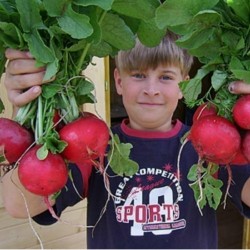
Giant Radish Seeds “ROSSO...
Pret
1,95 €
SKU: VE 36
Seeds Gallery Com,
5/
5
<!DOCTYPE html>
<html>
<head>
<meta http-equiv="Content-Type" content="text/html; charset=UTF-8" />
</head>
<body>
<div id="idTab1" class="rte">
<h2><strong><em><span style="text-decoration: underline;">Giant Radish Seeds “ROSSO GIGANTE“</span></em></strong></h2>
<h3><span style="color: #ff0000;"><strong>Price for Package of 20 seeds.</strong></span></h3>
<p>Solid white flesh is firm, crisp and mild. Globe-shaped roots have deep crimson skin, and reach 10cm in diameter, without becoming hollow or pithy. Solid white flesh is firm, crisp and mild. Ready to harvest 29 days after seeding.</p>
<p>GARDEN HINTS: Thrives in cool weather. Make successive plantings every 2 weeks until late spring, then again a month before frost.</p>
<p> </p>
<p>Sun: Full Sun</p>
<p>Spread: 3 inches</p>
<p>Height: 4-6 inches</p>
<p>Thinning: 3 inches</p>
<p>Days to Maturity: 30 days</p>
<p>Sowing Method: Direct Sow</p>
</div>
</body>
</html>
VE 36 (20 S)

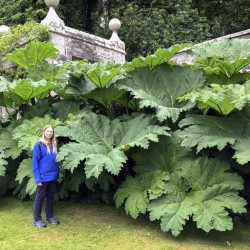
Giant Rhubarb Seeds...
Pret
1,95 €
SKU: UT 2
Seeds Gallery Com,
5/
5
<div id="idTab1" class="rte">
<h2><span style="font-size: 14pt;" class=""><strong>Giant Rhubarb - Seeds (Gunnera manicata)<br></strong></span></h2>
<h2><span style="color: #ff0000;"><strong><span style="font-size: 14pt;">Price for Package of 10 seeds.</span></strong></span></h2>
<div>Gunnera manicata syn. Gunnera brasiliensis is also known as giant rhubarb. It is a perennial herbaceous plant which is native to the mountains of Brasil and Colombia. Giant gunneras are huge ornamental plants that need a lot of space, which are fitted for big gardens with damps areas or ponds. The leaves usually die back in winter, but the plant itself with survive lower temperatures, down to about 14°F (-10°C) and even lower with some protection. This plant can thus be grown in USDA zones 8a and warmer, and could be tried in sheltered places in zones 7.</div>
<div>This plant has huge decidious leaves, that can be up to 8 ft (2,40 m) wide in its native area. Leaf stems are thorny, and can be up to 4 or 5 ft. (Up to 1,50 m) Gunnera manicata has tiny green-red flowers, which are grouped in erected inflorescences. These inflorescences bear both male and female flowers.</div>
<div>
<p>This plant bear tiny red-green fruits, which are about .1 in (2.5 mm) long.</p>
</div>
<div>Gunnera manicata requiert les expositions suivantes : ombre,mi-ombre,lumière</div>
<div>These plants thrive in damp bog conditions, in a moist and fertile soil.</div>
</div><script src="//cdn.public.n1ed.com/G3OMDFLT/widgets.js"></script>
UT 2


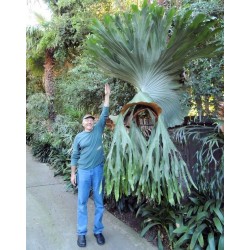
Giant Staghorn Fern Seeds...
Pret
1,70 €
SKU: UT 1
Seeds Gallery Com,
5/
5
<div id="idTab1" class="rte">
<h2><span style="font-size:14pt;"><strong>Giant Staghorn Fern Seeds (Platycerium Superbum)</strong></span></h2>
<h2><span style="color:#ff0000;"><strong><span style="font-size:14pt;">Price for Package of 50 seeds.</span></strong></span></h2>
<div>Platycerium superbum, commonly known as the Staghorn fern is found in Queensland, northern New South Wales and Malaysia. Platycerium is a genus of about 18 species of ferns, four of which occur in eastern Australia. Two, the elkhorn (Platycerium bifurcatum) and the staghorn (P.superbum) are well-known in cultivation.</div>
<div>Staghorns are generally epiphytic (growing on trees), or occasionally lithophytic (growing on rocks). These ferns have broad nest fronds, or sterile fronds, to 60 cm diameter, which grow and embrace the host and from a humus-collecting bowl, which can reach impressive dimensions of 1 metre across. The laminae of these fronds are erect and simple with deeply lobed upper margins. Fertile fronds are quite different in appearance, being broad at the base and hanging down from the plant, with forked laminae up to 200 cm in length and 2-6 cm wide. . The Staghorn entirely lacks the ability to produce plantlets, and the single plant simply gets larger each season. Brown sori, which contain spores, occur on the underside of the fertile fronds.</div>
<div>In nature, these ferns often grow high up in trees, where they receive much light filtering through the canopy. Similarly, plenty of light is important for good growth in cultivation and dense shade is resented. Filtered sunlight with some humidity is best. </div>
<div>Growing Platycerium from spore is not difficult given the right techniques and conditions. This species is frost tender and will not tolerate temperatures below 1*C. Some protection from drying wind is important, however, overwatering must be avoided. If the peaty centre remains continually wet, rot may occur and eventually kill the fern. Soaking intermittently, say, once weekly (but also depending on rainfall) is best. Fertilise with liquid organic fertilisers and sprinkle about 5g slow release fertiliser capsules into the bowl at intervals. Every few months place small pieces of aged hardened cow manure in the bowl. Staghorn ferns appreciate a slightly acidic environment and some growers find the remnants of a teapot emptied into the bowl to be helpful.</div>
<div>Because of their relatively large size, staghorn ferns are rarely grown in pots except when small specimens are purchased. Utilizing their natural growth habit, staghorn ferns are well suited for mounting on cypress wood or tree fern fiber plaque or wire baskets. To mount a fern on a slab of wood, place a few handfuls of growing medium on the wood slightly below center, shaping it in a circular mound. Place the fern on the medium so the bud is slightly below center of the mount and basal fronds are in contact with the medium. Using wire (not copper) or plastic stripping, secure the fern tightly to its mount. This same method is also used for tree fern fiber plaques. Wire baskets can also be used when packed with medium and hung so the top of the basket is vertical. The fern is secured to the basket using wire or plastic stripping. Clay pots can also be used if hung sideways. </div>
<div>Remounting to larger containers will be needed periodically as the fern grows. How often these are remounted depends on the size of the original mount, rate of medium breakdown, and growth rate of the fern. When the basal fronds reach the sides of the mount, it's time to place the fern on a larger mount. If the staghorn fern becomes too large, it may become impractical to remove the fern from its mount. In this case, enlarging the original mount periodically is suggested.</div>
</div>
UT 1


McKanas Giant Mixed Seeds
Pret
1,85 €
SKU: F 12
Seeds Gallery Com,
5/
5
<div id="idTab1" class="rte">
<h2><span style="font-size:14pt;"><strong>McKanas Giant Mixed Seeds (Aquilegia)</strong></span></h2>
<h2><span style="color:#ff0000;font-size:14pt;"><strong>Price for Package of 10 seeds.</strong></span></h2>
<div>
<div>Mckana's Columbine is a superior strain developed for its very large, 7 to 8cm (3in) flowers with long graceful spurs. This exciting group of hybrid aquilegia in a very wide colour range, including combinations of white, pink, blue, yellow, pink, pale-blue, purple and scarlet, with crisp coloured outer petals, and cream/white coloured inner petals.</div>
<div>Mckana’s Giant Columbine will grow to around 75cm (30in) tall at maturity, with a spread of 45cm (18in). Its foliage tends to remain dense right to the ground. It grows and blooms well in shady areas, they are excellent for rock gardens, perennial beds and borders. Sowing: Sow February to June or September to October. </div>
<div>Seeds can either be sown directly where they are to flower or can be sown into pots and grown on, before transplanting. Avoid the hottest and coldest parts of the year and sow in early spring to early summer or sow in autumn. </div>
<div>Sowing Direct: </div>
<div>Find a cooler part of the garden that enjoys dappled shade. If you have plenty of seed start by sprinkling seeds straight onto the ground in late-summer. Rake so that the seeds are covered with a small amount of soil. The seeds will germinate by the following spring. </div>
<div>Aquilegias will self-sow into choice plants, so only sprinkle the seeds where it will not matter.</div>
<div>Sowing Indoors: </div>
<div>Sow seed on the surface of lightly firmed, seed compost in pots or trays. Cover seed with a light sprinkling of vermiculite. Stand the pot in water until the soil is moist and drain. Either use a plastic lid or seal container inside a polythene bag to keep the moisture in. Keep at 15 to 20°C (59 to 68°F).</div>
<div>After sowing, do not exclude light as this helps germination. Keep the surface of the compost moist but not waterlogged. Always stand the pots in water: never water on the top of seeds. </div>
<div>Expect germination within 2 to 3 weeks. Overwinter September sowings in a cold frame and plant out the following spring. When large enough to handle, transplant seedlings into 7.5cm (3in) pots or trays. Gradually acclimatise to outdoor conditions for 10 to 15 days before planting out after all risk of frost, 30cm (12in) apart. </div>
<div>Cultivation: </div>
<div>Feeding is unnecessary unless the soil is exceptionally poor. An aquilegia should not need staking, but an overfed plant will flop. Their rounded foliage is attractive, even in winter, but it looks much more impressive when given a late-autumn haircut. Cut the leaves right back and fresh foliage will appear.</div>
<div>When the flowers are finished, around the end of June, cut the stalks off and let the leaves do their stuff without the distraction of drying spikes of stem.</div>
<div>Lift and divide large clumps in early spring and apply a generous 5 to 7cm (2 to 3in) mulch of well-rotted manure or garden compost around the plant. Divided specimens may take some time to establish since they don’t like having their roots disturbed. Contact with the sap may cause skin irritation.</div>
<div>Columbines tend to cross-pollinate, hybridise, and self seed freely, creating new strains and colours. The formation of seeds will shorten the productive lifespan of the plant, so it is best to remove the spent flowers promptly. Columbines tend to lose vitality after 4 to 5 years and are best replaced at that time.</div>
<div>Plant Uses: </div>
<div>Cottage/Informal Garden, Borders and Beds. Shade Gardens.</div>
<div>Origin: </div>
<div>Columbines in the wild are identified by species characteristics and often are endemic to a specific geographic area. </div>
<div>There are at least seventy species of Aquilegia, including Britain’s native Aquilegia vulgaris. Aquilegia vulgaris has been grown in gardens since the 13th century, when it first appears in illuminated manuscripts. </div>
<div>Columbines (even those in the wild) will hybridise easily between species, many of those bought in nurseries are cultivars and are bred and sold for their showy blooms and hardiness. </div>
<div>Long-spurred hybrids are derived from crosses with A. caerulea, (coerulea.) introduced into British gardens from the Rocky Mountains in the 1860s, and hybrids with A. chrysantha from Arizona have widened the range of colours available. </div>
<div>Nomenclature: </div>
<div>The genus name Aquilegia comes from the Latin word aquil meaning eagle, in reference to the flower’s five spurs at the back of the flower that resemble an eagle’s talon. </div>
<div>The common name, columbine, comes from the Latin columbinus, meaning 'dove-like'. If you up-end an aquilegia to reveal the spurs, they resemble birds feeding and 'Doves round a Dish', another common name, reflects this perfectly. The flower was often depicted in medieval paintings to represent the dove of peace. </div>
<div>The family name Ranunculus is a diminutive form of the Latin rana meaning 'little frog'; because many of its members grow in moist places.</div>
</div>
</div>
F 12


Această plantă are fructe uriașe
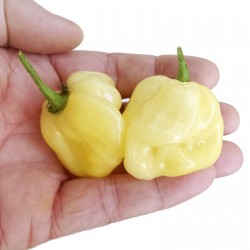
Semințe Giant White Habanero
Pret
1,95 €
SKU: C 60
Seeds Gallery Com,
5/
5
<h2><strong>Semințe Giant White Habanero</strong></h2>
<h2><span style="color: #fe0000;"><strong>Preț pentru pachetul de 3 semințe.</strong></span></h2>
White Giant Habanero este mai mare decât un habanero obișnuit, dar în comparație cu omologii săi albi precum White Bullet este un GIGANT! Au căldură intensă și o aromă oarecum fumurie! Habanero White Giant sau Giant White Habanero este un soi pe care l-a găsit la un comerciant italian acum 20 de ani (1992-1993), acest soi provine dintr-o zonă necunoscută din Caraibe.<br><br>Capsicum chinense este un chili rar și extrem de fierbinte în cultivare. Pungența sa este în medie de 300.000 pe scara Scoville, iar la unele exemplare atinge 410.000 de puncte - astfel, este comparabilă cu cea mai tare Habanero Red Savina și de aproximativ o sută de ori mai ascuțită decât un jalapeno. Are un miros floral și un gust caracteristic, cu o notă de fum și note citrice.<br><br>La fel ca și alte habanero, este folosit pentru a face sosuri, supe, tocănițe, marinate. Răspândit în special în bucătăria națională jamaicană, guyaneză și bahameană. Datorită păstăilor albe exotice și dimensiunilor compacte, este cultivată în scopuri decorative.<br><br>Distribuție și ecologie<br>Informațiile despre originea habanero alb sunt contradictorii. Unele surse susțin că patria acestui soi de chili este Peru, potrivit altora, a fost luată de spanioli din Peninsula Yucatan din sudul Mexicului, de aceea este cunoscută și sub denumirea de „habanero alb peruvian” și „habanero alb Yucatan” ".<br><br>Descriere botanică<br>Planta stufoasă joasă de 35 - 40 cm înălțime. Florile sunt mici, cu cinci petale, în formă de stea, de un alb pur. O varietate cu randament ridicat, fiecare tufă dă până la un kilogram de fructe de aproximativ 5 cm lungime. Fructificând 4-6 luni, păstăile se coc în 90 de zile, schimbând culoarea de la verde la alb cremos.<script src="//cdn.public.n1ed.com/G3OMDFLT/widgets.js"></script>
C 60


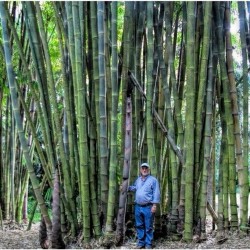
Giant Thorny Bamboo Seeds
Pret
1,60 €
SKU: B 5
Seeds Gallery Com,
5/
5
<!DOCTYPE html>
<html>
<head>
<meta http-equiv="Content-Type" content="text/html; charset=UTF-8" />
</head>
<body>
<div id="idTab1" class="rte">
<h2 id="short_description_content" class="rte align_justify"><span style="font-size: 14pt;"><strong>Giant Thorny Bamboo Seeds (Bambusa arundinacea)</strong></span></h2>
<h2 class="rte align_justify"><span style="color: #ff0000; font-size: 14pt;"><strong>Price for Package of 5 seeds.</strong></span></h2>
<p>Bambusa bambos also known as Giant Thorny Bamboo or Indian Thorny Bamboo, is a species of tropical dense clumping bamboo native to Southeast Asia. This bamboo species was previously named Bambusa arundinacea and is often used for construction purposes.</p>
<p><strong>Culms: </strong>The fast growing, strong woody culms of <em>Bambusa bambos </em>have an average diameter between 10-18 cm, and are between 20-30 m tall (although the tallest recorded culm measured 40 m). The internodes are dark green colored with very thick walls. Nodes are slightly swollen and some lower nodes produce short aerial roots.</p>
<p><strong>Branches: </strong>Nodes contain a central dominant branch with one or two lateral branches and are often spine-like. Thorny lower branches are long and wiry, and usually bent towards the ground. The upper leafy branches produce a fan like plume and bearing small spines.</p>
<p><strong>Leaves: </strong>Leaves are lance-shaped with a long-pointed tip. They measure between 15-30 cm long and 8-15 mm broad, with about 10 leaves in each complement.</p>
<p><strong>Seeds: </strong>This bamboo species may flower every 30-50 years. Gregarious flowering was last reported in the early 90's (1991-1995) where single clumps gave about 50-100 kg of seeds (70,000 to 85,000 seeds per kilogram). <em>Bambusa bambos </em>seeds are generally viable for a period of 6-8 months.</p>
<p><strong>Habitat: </strong><em>Bambusa bambos </em>prefers a humid tropical climate and grows best along river banks or river valleys with a rich, moist soil. It reaches its best development in moist deciduous forests up to an altitude of 1,250 m and receiving nearly 2,000-2,500 mm rainfall a year. In flat alluvial soil, the culms are reported to attain a height of 25-30 m and a diameter of 20-25 cm.</p>
<p><strong>Uses: </strong>Culms are used for house construction, scaffolding, rafters, thatching and roofing, handicrafts and art objects, basket making, bows and arrows, furniture, floating timber and rafting, cooking utensils and fencing. The raw material of this bamboo is also an important source for paper pulp and panel products. Shoots and seeds are edible and leaves are used as fodder and medicine.</p>
<p><strong>Mechanical properties:</strong> Fibre stress varies between 18.3-26.5 N/mm2, modulus of rupture is 35-39.3 N/mm2, modulus of elasticity 1.5-4.4 kN/mm2 and maximum crushing stress is 39.1-47 N/mm2.</p>
<p><strong>Origin: </strong><em>Bambusa bambos</em> is native to Southeast Asia, to be more specific: India, Pakistan, Sri Lanka, Bangladesh, Burma, Thailand, Laos, Kampuchea, Vietnam and China.</p>
<p>In India this species occupies 15% of all bamboo forests. It was also introduced to many other tropical countries and regions; including New Guinea and Pacific Islands, northern Australia and New Zealand, tropical Africa and Madagascar, Central and South America (including Caribbean Islands), Mexico and Southern USA (Florida).</p>
<table cellspacing="0" cellpadding="0" border="1">
<tbody>
<tr>
<td colspan="2" width="100%" valign="top">
<h3 align="center"><span style="color: #008000;"><strong>Sowing Instructions</strong></span></h3>
</td>
</tr>
<tr>
<td valign="top" nowrap="nowrap">
<p align="center"><span style="color: #008000;"><strong>Propagation:</strong></span></p>
</td>
<td valign="top">
<p align="center"><span style="color: #008000;">Seeds</span></p>
</td>
</tr>
<tr>
<td valign="top" nowrap="nowrap">
<p align="center"><span style="color: #008000;"><strong>Pretreat:</strong></span></p>
</td>
<td valign="top">
<p align="center"><span style="color: #008000;">0</span></p>
</td>
</tr>
<tr>
<td valign="top" nowrap="nowrap">
<p align="center"><span style="color: #008000;"><strong>Stratification:</strong></span></p>
</td>
<td valign="top">
<p align="center"><span style="color: #008000;">0</span></p>
</td>
</tr>
<tr>
<td valign="top" nowrap="nowrap">
<p align="center"><span style="color: #008000;"><strong>Sowing Time:</strong></span></p>
</td>
<td valign="top">
<p align="center"><span style="color: #008000;">all year round</span></p>
</td>
</tr>
<tr>
<td valign="top" nowrap="nowrap">
<p align="center"><span style="color: #008000;"><strong>Sowing Depth:</strong></span></p>
</td>
<td valign="top">
<p align="center"><span style="color: #008000;">Needs Light to germinate! Just sprinkle on the surface of the substrate + gently press</span></p>
</td>
</tr>
<tr>
<td valign="top" nowrap="nowrap">
<p align="center"><span style="color: #008000;"><strong>Sowing Mix:</strong></span></p>
</td>
<td valign="top">
<p align="center"><span style="color: #008000;">Coir or sowing mix + sand or perlite</span></p>
</td>
</tr>
<tr>
<td valign="top" nowrap="nowrap">
<p align="center"><span style="color: #008000;"><strong>Germination temperature:</strong></span></p>
</td>
<td valign="top">
<p align="center"><span style="color: #008000;">25-30°C</span></p>
</td>
</tr>
<tr>
<td valign="top" nowrap="nowrap">
<p align="center"><span style="color: #008000;"><strong>Location:</strong></span></p>
</td>
<td valign="top">
<p align="center"><span style="color: #008000;">bright + keep constantly moist not wet</span></p>
</td>
</tr>
<tr>
<td valign="top" nowrap="nowrap">
<p align="center"><span style="color: #008000;"><strong>Germination Time:</strong></span></p>
</td>
<td valign="top">
<p align="center"><span style="color: #008000;">1 - 8 weeks</span></p>
</td>
</tr>
<tr>
<td valign="top" nowrap="nowrap">
<p align="center"><span style="color: #008000;"><strong>Watering:</strong></span></p>
</td>
<td valign="top">
<p align="center"><span style="color: #008000;">Water regularly during the growing season</span></p>
</td>
</tr>
<tr>
<td valign="top" nowrap="nowrap"> </td>
<td valign="top">
<p align="center"><br /><span style="color: #008000;"> <em>Copyright © 2012 Seeds Gallery - Saatgut Galerie - Galerija semena. </em><em>All Rights Reserved.</em></span></p>
</td>
</tr>
</tbody>
</table>
<p> </p>
</div>
</body>
</html>
B 5 (5 S)


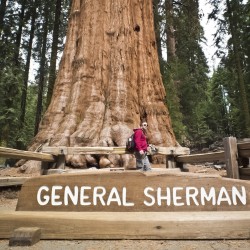
Giant Sequoia Seeds Bonsai
Pret
2,35 €
SKU: T 16
Seeds Gallery Com,
5/
5
<div id="more_info_sheets" class="sheets align_justify">
<div id="idTab1" class="rte">
<h2><span style="font-size: 14pt;"><strong>Giant Sequoia Seeds Bonsai (Sequoiadendron giganteum)</strong></span></h2>
<h2><span style="color: #ff0000; font-size: 14pt;"><strong>Price for Package of 5 seeds.</strong></span></h2>
<p><i style="font-size: 14px;"><b>Sequoiadendron giganteum</b></i><span style="font-size: 14px;"> </span><span style="font-size: 14px;">(</span><b style="font-size: 14px;">giant sequoia</b><span style="font-size: 14px;">; also known as</span><span style="font-size: 14px;"> </span><b style="font-size: 14px;">giant redwood</b><span style="font-size: 14px;">,</span><span style="font-size: 14px;"> </span><b style="font-size: 14px;">Sierra redwood</b><span style="font-size: 14px;">,</span><span style="font-size: 14px;"> </span><b style="font-size: 14px;">Sierran redwood</b><span style="font-size: 14px;">,</span><span style="font-size: 14px;"> </span><b style="font-size: 14px;">Wellingtonia</b><span style="font-size: 14px;"> </span><span style="font-size: 14px;">or simply</span><span style="font-size: 14px;"> </span><b style="font-size: 14px;">big tree</b><span style="font-size: 14px;">—a nickname also used by</span><span style="font-size: 14px;"> </span>John Muir<sup id="cite_ref-2" class="reference">[2]</sup><span style="font-size: 14px;">) is the sole living species in the genus</span><span style="font-size: 14px;"> </span><i style="font-size: 14px;">Sequoiadendron</i><span style="font-size: 14px;">, and one of three species of</span><span style="font-size: 14px;"> </span>coniferous<span style="font-size: 14px;"> </span>trees<span style="font-size: 14px;"> </span><span style="font-size: 14px;">known as</span><span style="font-size: 14px;"> </span>redwoods<span style="font-size: 14px;">, classified in the family</span><span style="font-size: 14px;"> </span>Cupressaceae<span style="font-size: 14px;"> </span><span style="font-size: 14px;">in the subfamily</span><span style="font-size: 14px;"> </span>Sequoioideae<span style="font-size: 14px;">, together with</span><span style="font-size: 14px;"> </span><i style="font-size: 14px;">Sequoia sempervirens</i><span style="font-size: 14px;"> </span><span style="font-size: 14px;">(coast redwood) and</span><span style="font-size: 14px;"> </span><i style="font-size: 14px;">Metasequoia glyptostroboides</i><span style="font-size: 14px;"> </span><span style="font-size: 14px;">(dawn redwood). Giant sequoia specimens are the most massive trees on Earth.</span><sup id="cite_ref-usda_3-0" class="reference">[3]</sup><span style="font-size: 14px;"> </span><span style="font-size: 14px;">The common use of the name</span><span style="font-size: 14px;"> </span><i style="font-size: 14px;">sequoia</i><span style="font-size: 14px;"> </span><span style="font-size: 14px;">usually refers to</span><span style="font-size: 14px;"> </span><i style="font-size: 14px;">Sequoiadendron giganteum</i><span style="font-size: 14px;">, which occurs naturally only in groves on the western slopes of the</span><span style="font-size: 14px;"> </span>Sierra Nevada<span style="font-size: 14px;"> </span><span style="font-size: 14px;">Mountains of California.</span></p>
<div>
<p>The etymology of the genus name has been presumed—initially in<span> </span><i>The Yosemite Book</i><span> </span>by<span> </span>Josiah Whitney<span> </span>in 1868<sup id="cite_ref-cnps1_4-0" class="reference">[4]</sup>—to be in honor of<span> </span>Sequoyah<span> </span>(1767–1843), who was the inventor of the<span> </span>Cherokee syllabary.<sup id="cite_ref-natcomp_5-0" class="reference">[5]</sup><span> </span>An etymological study published in 2012, however, concluded that the name was more likely to have originated from the Latin<span> </span><i>sequi</i><span> </span>(meaning<span> </span><i>to follow</i>) since the number of seeds per cone in the newly-classified genus fell in mathematical sequence with the other four genera in the suborder.<sup id="cite_ref-cnps2_6-0" class="reference">[6]</sup></p>
<h2><span class="mw-headline" id="Description">Description</span></h2>
<div class="thumb tleft">
<div class="thumbinner"><img alt="" src="https://upload.wikimedia.org/wikipedia/commons/thumb/2/20/Daniel_Fuchs.CC-BY-SA.Sequoiadendron_giganteum.jpg/220px-Daniel_Fuchs.CC-BY-SA.Sequoiadendron_giganteum.jpg" width="220" height="150" class="thumbimage">
<div class="thumbcaption">
<div class="magnify"></div>
Leaves of<span> </span><i>Sequoiadendron giganteum</i></div>
</div>
</div>
<p>Giant sequoia specimens are the most massive individual trees in the world.<sup id="cite_ref-usda_3-1" class="reference">[3]</sup><span> </span>They grow to an average height of 50–85 m (164–279 ft) with trunk diameters ranging from 6–8 m (20–26 ft). Record trees have been measured at 94.8 m (311 ft) tall. Trunk diameters of 17 m (56 ft) have been claimed via research figures taken out of context.<sup id="cite_ref-Flint_2002_7-0" class="reference">[7]</sup><span> </span>The specimen known to have the greatest<span> </span>diameter at breast heightis the<span> </span>General Grant tree<span> </span>at 8.8 m (28.9 ft).<sup id="cite_ref-8" class="reference">[8]</sup><span> </span>Between 2014 and 2016, specimens of<span> </span>coast redwood<span> </span>were found to have greater trunk diameters than all known giant sequoias.<sup id="cite_ref-mdvaden.com_9-0" class="reference">[9]</sup><span> </span>The trunks of coast redwoods taper at lower heights than those of giant sequoias which have more columnar trunks that maintain larger diameters to greater heights.</p>
<p>The oldest known giant sequoia is 3,500 years old based on<span> </span>dendrochronology. Giant sequoias are among<span> </span>the oldest living organisms<span> </span>on Earth. Giant sequoia bark is fibrous, furrowed, and may be 90 cm (3 ft) thick at the base of the columnar trunk. The bark provides significant protection from fire damage. The leaves are<span> </span>evergreen, awl-shaped, 3–6 mm (<span class="frac nowrap"><sup>1</sup>⁄<sub>8</sub></span>–<span class="frac nowrap"><sup>1</sup>⁄<sub>4</sub></span> in) long, and arranged spirally on the shoots.</p>
<div class="thumb tleft">
<div class="thumbinner"><img alt="" src="https://upload.wikimedia.org/wikipedia/commons/thumb/e/e4/Sequoiadendron_giganteum_MHNT.BOT.2004.0.191.jpg/220px-Sequoiadendron_giganteum_MHNT.BOT.2004.0.191.jpg" width="220" height="199" class="thumbimage">
<div class="thumbcaption">
<div class="magnify"></div>
Giant sequoia cones and seed</div>
</div>
</div>
<p>The giant sequoia regenerates by<span> </span>seed. The seed<span> </span>cones<span> </span>are 4–7 cm (<span class="frac nowrap">1<span class="visualhide"> </span><sup>1</sup>⁄<sub>2</sub></span>–3 in) long and mature in 18–20 months, though they typically remain green and closed for as long as 20 years. Each cone has 30–50 spirally arranged scales, with several seeds on each scale, giving an average of 230 seeds per cone. Seeds are dark brown, 4–5 mm (0.16–0.20 in) long, and 1 mm (0.04 in) broad, with a 1-millimeter (0.04 in) wide, yellow-brown wing along each side. Some seeds shed when the cone scales shrink during hot weather in late summer, but most are liberated by insect damage or when the cone dries from the heat of fire. Young trees start to bear cones after 12 years.</p>
<p>Trees may produce sprouts from their stumps subsequent to injury, until about 20 years old; however, shoots do not form on the stumps of mature trees as they do on coast redwoods. Giant sequoias of all ages may sprout from their<span> </span>boles<span> </span>when branches are lost to fire or breakage.</p>
<p>A large tree may have as many as 11,000 cones. Cone production is greatest in the upper portion of the canopy. A mature giant sequoia disperses an estimated 300–400 thousand seeds annually. The winged seeds may fly as far as 180 m (590 ft) from the parent tree.</p>
<p>Lower branches die readily from being shaded, but trees younger than 100 years retain most of their dead branches. Trunks of mature trees in groves are generally free of branches to a height of 20–50 m (70–160 ft), but solitary trees retain lower branches.</p>
<h2><span class="mw-headline" id="Biology">Biology</span></h2>
<p>Because of its size, the tree has been studied for its water pull. Water from the roots can be pushed up only a few meters by<span> </span>osmotic pressure<span> </span>but can reach extreme heights by using a system of branching<span> </span>capillarity(capillary action) in the tree's<span> </span>xylem<span> </span>(the water tubules) and sub-pressure from evaporating water at the leaves.<sup id="cite_ref-10" class="reference">[10]</sup><span> </span>Sequoias supplement water from the soil with fog, taken up through<span> </span>air roots, at heights to where the root water cannot be pulled.</p>
<h2><span class="mw-headline" id="Distribution">Distribution</span></h2>
<div class="thumb tright">
<div class="thumbinner"><img alt="" src="https://upload.wikimedia.org/wikipedia/commons/thumb/6/69/A014%2C_Sequoia_National_Park%2C_California%2C_USA%2C_1998.jpg/220px-A014%2C_Sequoia_National_Park%2C_California%2C_USA%2C_1998.jpg" width="220" height="147" class="thumbimage">
<div class="thumbcaption">
<div class="magnify"></div>
The<span> </span>Generals Highway<span> </span>passes between giant sequoias in Sequoia National Park</div>
</div>
</div>
<p>The natural distribution of giant sequoias is restricted to a limited area of the western<span> </span>Sierra Nevada,<span> </span>California. They occur in scattered groves, with a total of 68 groves (see<span> </span>list of sequoia groves<span> </span>for a full inventory), comprising a total area of only 144.16 km<sup>2</sup><span> </span>(35,620 acres). Nowhere does it grow in pure stands, although in a few small areas, stands do approach a pure condition. The northern two-thirds of its range, from the<span> </span>American River<span> </span>in<span> </span>Placer County<span> </span>southward to the<span> </span>Kings River, has only eight disjunct groves. The remaining southern groves are concentrated between the Kings River and the Deer Creek Grove in southern<span> </span>Tulare County. Groves range in size from 12.4 km<sup>2</sup><span> </span>(3,100 acres) with 20,000 mature trees, to small groves with only six living trees. Many are protected in<span> </span>Sequoia<span> </span>and<span> </span>Kings Canyon National Parks<span> </span>and<span> </span>Giant Sequoia National Monument.</p>
<p>The giant sequoia is usually found in a humid climate characterized by dry summers and<span> </span>snowy<span> </span>winters. Most giant sequoia groves are on granitic-based residual and<span> </span>alluvial<span> </span>soils. The elevation of the giant sequoia groves generally ranges from 1,400–2,000 m (4,600–6,600 ft) in the north, to 1,700–2,150 metres (5,580–7,050 ft) to the south. Giant sequoias generally occur on the south-facing sides of northern mountains, and on the northern faces of more southerly slopes.</p>
<p>High levels of reproduction are not necessary to maintain the present population levels. Few groves, however, have sufficient young trees to maintain the present density of mature giant sequoias for the future. The majority of giant sequoias are currently undergoing a gradual decline in density since European settlement.</p>
<p>While the present day distribution of this species is limited to a small area of California, it was once much more widely distributed in prehistoric times, and was a reasonably common species in North American and Eurasian coniferous forests until its range was greatly reduced by the last<span> </span>ice age. Older fossil specimens reliably identified as giant sequoia have been found in<span> </span>Cretaceous<span> </span>era sediments from a number of sites in North America and Europe, and even as far afield as New Zealand<span> </span>and Australia.</p>
<p>A group of sequoias was planted and is naturally propagating on<span> </span>Mount San Jacinto<span> </span>in<span> </span>Riverside County, southern California. The trees were planted by the<span> </span>United States Forest Service<span> </span>after a 1974 wildfire.<sup id="cite_ref-14" class="reference">[14]</sup></p>
<h2><span class="mw-headline" id="Ecology">Ecology</span></h2>
<div class="thumb tright">
<div class="thumbinner"><img alt="" src="https://upload.wikimedia.org/wikipedia/en/thumb/7/7b/Sequoia_trees.JPG/220px-Sequoia_trees.JPG" width="220" height="165" class="thumbimage">
<div class="thumbcaption">
<div class="magnify"></div>
Two giant sequoias,<span> </span>Sequoia National Park. The right-hand tree bears a large fire scar at its base; fires do not typically kill the trees but do remove competing thin-barked species, and aid giant sequoia regeneration.</div>
</div>
</div>
<p>Giant sequoias are in many ways adapted to forest fires. Their bark is unusually fire resistant, and their cones will normally open immediately after a fire.<sup id="cite_ref-15" class="reference">[15]</sup><span> </span>The giant sequoias are having difficulty reproducing in their original habitat (and very rarely reproduce in cultivation) due to the seeds only being able to grow successfully in full sun and in mineral-rich soils, free from competing vegetation. Although the seeds can germinate in moist needle<span> </span>humus<span> </span>in the spring, these seedlings will die as the duff dries in the summer. They therefore require periodic<span> </span>wildfire<span> </span>to clear competing vegetation and soil humus before successful regeneration can occur. Without fire, shade-loving species will crowd out young sequoia seedlings, and sequoia seeds will not germinate. When fully grown, these trees typically require large amounts of water and are therefore often concentrated near streams.</p>
<p>Fires also bring hot air high into the canopy via<span> </span>convection, which in turn dries and opens the cones. The subsequent release of large quantities of seeds coincides with the optimal postfire<span> </span>seedbed<span> </span>conditions. Loose ground ash may also act as a cover to protect the fallen seeds from<span> </span>ultraviolet radiation<span> </span>damage.</p>
<p>Due to fire suppression efforts and livestock grazing during the early and mid 20th century, low-intensity fires no longer occurred naturally in many groves, and still do not occur in some groves today. The suppression of fires leads to ground fuel build-up and the dense growth of fire-sensitive<span> </span>white fir, which increases the risk of more intense fires that can use the firs as ladders to threaten mature giant sequoia crowns. Natural fires may also be important in keeping<span> </span>carpenter ants<span> </span>in check.<sup id="cite_ref-16" class="reference">[16]</sup></p>
<p>In 1970, the<span> </span>National Park Service<span> </span>began controlled burns of its groves to correct these problems. Current policies also allow natural fires to burn. One of these untamed burns severely damaged the second-largest tree in the world, the<span> </span>Washington tree, in September 2003, 45 days after the fire started. This damage made it unable to withstand the snowstorm of January 2005, leading to the collapse of over half the trunk.</p>
<p>In addition to fire, two animal agents also assist giant sequoia seed release. The more significant of the two is a<span> </span>longhorn beetle<span> </span>(<i>Phymatodes nitidus</i>) that lays eggs on the cones, into which the larvae then bore holes. Reduction of the vascular water supply to the cone scales allows the cones to dry and open for the seeds to fall. Cones damaged by the beetles during the summer will slowly open over the next several months. Some research indicates many cones, particularly higher in the crowns, may need to be partially dried by beetle damage before fire can fully open them. The other agent is the<span> </span>Douglas squirrel<span> </span>(<i>Tamiasciurus douglasi</i>) that gnaws on the fleshy green scales of younger cones. The squirrels are active year round, and some seeds are dislodged and dropped as the cone is eaten.</p>
<h2><span class="mw-headline" id="Discovery_and_naming">Discovery and naming</span></h2>
<div class="thumb tright">
<div class="thumbinner"><img alt="" src="https://upload.wikimedia.org/wikipedia/commons/thumb/b/bd/Giant_sequoia_exhibitionism.jpg/220px-Giant_sequoia_exhibitionism.jpg" width="220" height="296" class="thumbimage">
<div class="thumbcaption">
<div class="magnify"></div>
Shortly after their discovery by Europeans, giant sequoias were subject to much exhibition</div>
</div>
</div>
<p>The giant sequoia was well known to<span> </span>Native American<span> </span>tribes living in its area. Native American names for the species include<span> </span><i>wawona</i>,<span> </span><i>toos-pung-ish</i><span> </span>and<span> </span><i>hea-mi-withic</i>, the latter two in the language of the Tule River Tribe.</p>
<p>The first reference to the giant sequoia by Europeans is in 1833, in the diary of the explorer J. K. Leonard; the reference does not mention any locality, but his route would have taken him through the<span> </span>Calaveras Grove.<sup id="cite_ref-farquhar_18-0" class="reference">[18]</sup><span> </span>This discovery was not publicized. The next European to see the species was John M. Wooster, who carved his initials in the bark of the 'Hercules' tree in the Calaveras Grove in 1850; again, this received no publicity. Much more publicity was given to the "discovery" by Augustus T. Dowd of the Calaveras Grove in 1852, and this is commonly cited as the species' discovery.<sup id="cite_ref-farquhar_18-1" class="reference">[18]</sup><span> </span>The tree found by Dowd, christened the 'Discovery Tree', was felled in 1853.</p>
<p>The first scientific naming of the species was by<span> </span>John Lindley<span> </span>in December 1853, who named it<span> </span><i>Wellingtonia gigantea</i>, without realizing this was an invalid name under the<span> </span>botanical code<span> </span>as the name<span> </span><i>Wellingtonia</i><span> </span>had already been used earlier for another unrelated plant (<i>Wellingtonia arnottiana</i><span> </span>in the family<span> </span>Sabiaceae). The name "Wellingtonia" has persisted in England as a common name.<sup id="cite_ref-19" class="reference">[19]</sup><span> </span>The following year,<span> </span>Joseph Decaisne<span> </span>transferred it to the same genus as the coast redwood, naming it<span> </span><i>Sequoia gigantea</i>, but again this name was invalid, having been applied earlier (in 1847, by<span> </span>Endlicher) to the coast redwood. The name<span> </span><i>Washingtonia californica</i><span> </span>was also applied to it by Winslow in 1854, though this too is invalid, belonging to the<span> </span>palm<span> </span>genus<span> </span><i>Washingtonia</i>.</p>
<div class="thumb tleft">
<div class="thumbinner"><img alt="" src="https://upload.wikimedia.org/wikipedia/commons/thumb/4/44/Closepintree.JPG/170px-Closepintree.JPG" width="170" height="227" class="thumbimage">
<div class="thumbcaption">
<div class="magnify"></div>
Clothespin tree in the<span> </span>Mariposa Grove,<span> </span>Yosemite National Park</div>
</div>
</div>
<p>In 1907, it was placed by<span> </span>Carl Ernst Otto Kuntze<span> </span>in the otherwise<span> </span>fossil<span> </span>genus<span> </span><i>Steinhauera</i>, but doubt as to whether the giant sequoia is related to the fossil originally so named makes this name invalid.</p>
<p>The nomenclatural oversights were finally corrected in 1939 by<span> </span>J. Buchholz, who also pointed out the giant sequoia is distinct from the coast redwood at the genus level and coined the name<span> </span><i>Sequoiadendron giganteum</i><span> </span>for it.</p>
<p>The etymology of the genus name has been presumed—initially in<span> </span><i>The Yosemite Book</i><span> </span>by<span> </span>Josiah Whitney<span> </span>in 1868<sup id="cite_ref-cnps1_4-1" class="reference">[4]</sup>—to be in honor of<span> </span>Sequoyah(1767–1843), who was the inventor of the<span> </span>Cherokee syllabary.<sup id="cite_ref-natcomp_5-1" class="reference">[5]</sup><span> </span>An etymological study published in 2012, however, concluded that the name was more likely to have originated from the Latin<span> </span><i>sequi</i><span> </span>(meaning<span> </span><i>to follow</i>) since the number of seeds per cone in the newly-classified genus fell in mathematical sequence with the other four genera in the suborder.<sup id="cite_ref-cnps2_6-1" class="reference">[6]</sup></p>
<p>John Muir<span> </span>wrote of the species in about 1870:</p>
<blockquote>
<p>"Do behold the King in his glory, King Sequoia! Behold! Behold! seems all I can say. Some time ago I left all for Sequoia and have been and am at his feet, fasting and praying for light, for is he not the greatest light in the woods, in the world? Where are such columns of sunshine, tangible, accessible, terrestrialized?'<span> </span><sup id="cite_ref-20" class="reference">[20]</sup></p>
</blockquote>
<h2><span class="mw-headline" id="Uses">Uses</span></h2>
<p>Wood from mature giant sequoias is highly resistant to decay, but due to being fibrous and brittle, it is generally unsuitable for construction. From the 1880s through the 1920s, logging took place in many groves in spite of marginal commercial returns. The<span> </span>Hume-Bennett Lumber Company<span> </span>was the last to harvest giant sequoia, going out of business in 1924.<sup id="cite_ref-21" class="reference">[21]</sup><span> </span>Due to their weight and brittleness, trees would often shatter when they hit the ground, wasting much of the wood. Loggers attempted to cushion the impact by digging trenches and filling them with branches. Still, as little as 50% of the timber is estimated to have made it from groves to the mill. The wood was used mainly for shingles and fence posts, or even for matchsticks.</p>
<p>Pictures of the once majestic trees broken and abandoned in formerly pristine groves, and the thought of the giants put to such modest use, spurred the public outcry that caused most of the groves to be preserved as protected land. The public can visit an example of 1880s clear-cutting at<span> </span>Big Stump Grove<span> </span>near<span> </span>General Grant Grove. As late as the 1980s, some immature trees were logged in<span> </span>Sequoia National Forest, publicity of which helped lead to the creation of<span> </span>Giant Sequoia National Monument.<sup class="noprint Inline-Template Template-Fact">[<i><span title="This claim needs references to reliable sources. (December 2010)">citation needed</span></i>]</sup></p>
<p>The wood from immature trees is less brittle, with recent tests on young<span> </span>plantation-grown trees showing it similar to coast redwood wood in quality. This is resulting in some interest in cultivating giant sequoia as a very high-yielding timber crop tree, both in California and also in parts of western Europe, where it may grow more efficiently than coast redwoods. In the northwest<span> </span>United States, some entrepreneurs have also begun growing giant sequoias for<span> </span>Christmas trees. Besides these attempts at tree farming, the principal economic uses for giant sequoia today are<span> </span>tourism<span> </span>and<span> </span>horticulture.</p>
<h2><span class="mw-headline" id="Cultivation">Cultivation</span></h2>
<p>Giant sequoia is a very popular<span> </span>ornamental tree<span> </span>in many areas. It is successfully grown in most of western and southern Europe, the Pacific Northwest of North America north to southwest<span> </span>British Columbia, the southern United States, southeast Australia, New Zealand and central-southern<span> </span>Chile. It is also grown, though less successfully, in parts of eastern North America.</p>
<p>Trees can withstand temperatures of −31 °C (−25 °F) or colder for short periods of time, provided the ground around the roots is insulated with either heavy snow or mulch. Outside its natural range, the foliage can suffer from damaging windburn.</p>
<p>A wide range of<span> </span>horticultural varieties<span> </span>have been selected, especially in Europe, including blue, compact blue, powder blue, hazel smith, pendulum—or weeping—varieties, and<span> </span>grafted<span> </span>cultivars.<sup id="cite_ref-cultivars_22-0" class="reference">[22]</sup></p>
<div class="thumb tright">
<div class="thumbinner"><img alt="" src="https://upload.wikimedia.org/wikipedia/commons/thumb/4/46/Sequoias_in_EuroDisney%2C_some_years_later.jpg/220px-Sequoias_in_EuroDisney%2C_some_years_later.jpg" width="220" height="165" class="thumbimage">
<div class="thumbcaption">
<div class="magnify"></div>
Sequoias in Eurodisney (near Paris) in 2009 and 2017</div>
</div>
</div>
<h3><span class="mw-headline" id="France">France</span></h3>
<p>The tallest giant sequoia ever measured outside of the United States<sup id="cite_ref-outside_the_US_23-0" class="reference">[23]</sup><span> </span>is a specimen planted near<span> </span>Ribeauvillé<span> </span>in<span> </span>France<span> </span>in 1856 and measured in 2014 at a height between 57.7 m (189 ft)<sup id="cite_ref-ribeauville_24-0" class="reference">[24]</sup><span> </span>and 58.1 m (191 ft)<span> </span>at age 158 years.</p>
<h3><span class="mw-headline" id="British_Isles">British Isles</span></h3>
<div class="thumb tright">
<div class="thumbinner"><img alt="" src="https://upload.wikimedia.org/wikipedia/commons/thumb/c/c0/Benmore.jpg/220px-Benmore.jpg" width="220" height="146" class="thumbimage">
<div class="thumbcaption">
<div class="magnify"></div>
The well-known giant sequoia<span> </span>avenue<span> </span>planted in 1863 at<span> </span>Benmore Botanic Garden, Scotland. These trees are all over 50 metres (160 ft) tall</div>
</div>
</div>
<p>The giant sequoia was first brought into cultivation in Britain in 1853 by the horticulturist<span> </span>Patrick Matthew<span> </span>of<span> </span>Perthshire<span> </span>from seeds sent by his botanist son John in California.<sup id="cite_ref-26" class="reference">[26]</sup><span> </span>A much larger shipment of seed collected from the<span> </span>Calaveras Grove<span> </span>by<span> </span>William Lobb, acting for the<span> </span>Veitch Nursery<span> </span>near<span> </span>Exeter, arrived in England in December 1853;<sup id="cite_ref-Earle_27-0" class="reference">[27]</sup><span> </span>seed from this batch was widely distributed throughout Europe.</p>
<p>Growth in Britain is very fast, with the tallest tree, at<span> </span>Benmore<span> </span>in southwest Scotland, reaching 56.4 m (185 ft) in 2014 at age 150 years,<sup id="cite_ref-28" class="reference">[28]</sup><span> </span>and several others from 50–53 m (164–174 ft) tall; the stoutest is around 12 m (39 ft) in girth and 4 m (13 ft) in diameter, in Perthshire. The<span> </span>Royal Botanic Gardens<span> </span>at<span> </span>Kew<span> </span>in London also contains a large specimen.<span> </span>Biddulph Grange<span> </span>Garden in<span> </span>Staffordshire<span> </span>holds a fine collection of both<span> </span><i>Sequoiadendron giganteum</i><span> </span>and<span> </span><i>Sequoia sempervirens</i><span> </span>(coast redwood). The General Sherman of California has a volume of 1,489 m<sup>3</sup><span> </span>(52,600 cu ft); by way of comparison, the largest giant sequoias in Great Britain have volumes no greater than 90–100 m<sup>3</sup><span> </span>(3,200–3,500 cu ft), one example being the 90 m<sup>3</sup><span> </span>(3,200 cu ft) specimen in the<span> </span>New Forest.</p>
<div class="thumb tleft">
<div class="thumbinner"><img alt="" src="https://upload.wikimedia.org/wikipedia/commons/thumb/c/c7/Newforestgiant.JPG/170px-Newforestgiant.JPG" width="170" height="227" class="thumbimage">
<div class="thumbcaption">
<div class="magnify"></div>
<i>Sequoiadendron giganteum</i><span> </span>at<span> </span>New Forest, Hampshire, England, one of the tallest in the UK at 52.73 m (173.0 ft).<sup id="cite_ref-toptrunks_29-0" class="reference">[29]</sup></div>
</div>
</div>
<p><i>Sequoiadendron giganteum</i><span> </span>has gained the<span> </span>Royal Horticultural Society's<span> </span>Award of Garden Merit.</p>
<p>An<span> </span>avenue<span> </span>of 218 giant sequoias was planted in 1865 near the town of<span> </span>Camberley,<span> </span>Surrey, England. The trees have since been surrounded by modern real estate development.</p>
<h3><span class="mw-headline" id="Italy">Italy</span></h3>
<p>Numerous giant sequoia were planted in<span> </span>Italy<span> </span>from 1860 through 1905. Several regions contain specimens that range from 40 to 48 metres (131 to 157 ft) in height. The largest tree is in<span> </span>Roccavione, in the<span> </span>Piedmont, with a basal circumference of 16 metres (52 ft). One notable tree survived a 200-metre (660 ft) tall flood wave in 1963 that was caused by a landslide at<span> </span>Vajont Dam. There are numerous giant sequoia in parks and reserves.</p>
<p>Growth rates in some areas of Europe are remarkable. One young tree in<span> </span>Italy<span> </span>reached 22 m (72 ft) tall and 88 cm (2.89 ft) trunk diameter in 17 years (Mitchell, 1972).</p>
<h3><span class="mw-headline" id="Northern_Europe">Northern Europe</span></h3>
<p>Growth further northeast in Europe is limited by winter cold. In<span> </span>Denmark, where extreme winters can reach −32 °C (−26 °F), the largest tree was 35 m (115 ft) tall and 1.7 m (5.6 ft) diameter in 1976 and is bigger today. One in<span> </span>Poland<span> </span>has purportedly survived temperatures down to −37 °C (−35 °F) with heavy snow cover.</p>
<p>Two members of the German Dendrology Society, E. J. Martin and Illa Martin, introduced the giant sequoia into German forestry at the<span> </span>Sequoiafarm Kaldenkirchen<span> </span>in 1952.<sup id="cite_ref-34" class="reference">[34]</sup></p>
<p>Twenty-nine giant sequoias, measuring around 30 m (98 ft) in height, grow in<span> </span>Belgrade's municipality of<span> </span>Lazarevac<span> </span>in<span> </span>Serbia.<sup id="cite_ref-35" class="reference">[35]</sup></p>
<p>The oldest<span> </span><i>sequoiadendron</i><span> </span>in the<span> </span>Czech Republic, at 44 m (144 ft), grows in<span> </span>Ratměřice<span> </span>u Votic castle garden.</p>
<h3><span class="mw-headline" id="United_States_and_Canada">United States and Canada</span></h3>
<div class="thumb tright">
<div class="thumbinner"><img alt="" src="https://upload.wikimedia.org/wikipedia/commons/thumb/b/b4/UnopenedMalePollenConesGiantSequoia.jpg/220px-UnopenedMalePollenConesGiantSequoia.jpg" width="220" height="165" class="thumbimage">
<div class="thumbcaption">
<div class="magnify"></div>
Unopened pollen (male) cones of cultivated tree in<span> </span>Portland, Oregon, USA (fall)</div>
</div>
</div>
<div class="thumb tright">
<div class="thumbinner"><img alt="" src="https://upload.wikimedia.org/wikipedia/commons/thumb/e/ef/GreenSeedConesSequoiadendronGiganteum.JPG/220px-GreenSeedConesSequoiadendronGiganteum.JPG" width="220" height="165" class="thumbimage">
<div class="thumbcaption">
<div class="magnify"></div>
Immature seed (female) cones of cultivated tree in Portland, Oregon, USA (fall)</div>
</div>
</div>
<p>Giant sequoias are grown successfully in the Pacific Northwest and southern US, and less successfully in eastern North America. Giant sequoia cultivation is very successful in the<span> </span>Pacific Northwest<span> </span>from western<span> </span>Oregon<span> </span>north to southwest<span> </span>British Columbia, with fast growth rates. In<span> </span>Washington<span> </span>and Oregon, it is common to find giant sequoias that have been successfully planted in both urban and rural areas. In the Seattle area, large specimens exceeding 90 ft (27 m) are fairly common and exist in several city parks and many private yards (especially east Seattle including Capitol Hill, Washington Park, & Leschi/Madrona, as well as Tacoma's Jefferson Park).</p>
<p>In the northeastern US there has been some limited success in growing the species, but growth is much slower there, and it is prone to<span> </span><i>Cercospora</i><span> </span>and<span> </span><i>Kabatina</i><span> </span>fungal<span> </span>diseases due to the hot, humid summer climate there. A tree at<span> </span>Blithewold Gardens, in<span> </span>Bristol, Rhode Island<span> </span>is reported to be 27 metres (89 ft) tall, reportedly the tallest in the<span> </span>New England states.<sup id="cite_ref-blitewold1_36-0" class="reference">[36]</sup><sup id="cite_ref-blitewold2_37-0" class="reference">[37]</sup><span> </span>The tree at the<span> </span>Tyler Arboretum<span> </span>in<span> </span>Delaware County, Pennsylvania<span> </span>at 29.1 metres (95 ft) may be the tallest in the northeast.<sup id="cite_ref-pabigtree_38-0" class="reference">[38]</sup><span> </span>Specimens also grow in the<span> </span>Arnold Arboretum<span> </span>in<span> </span>Boston,<span> </span>Massachusetts<span> </span>(planted 1972, 18 m tall in 1998), at<span> </span>Longwood Gardens<span> </span>near<span> </span>Wilmington, Delaware, in the<span> </span>New Jersey State Botanical Garden<span> </span>at<span> </span>Skylandsin<span> </span>Ringwood State Park,<span> </span>Ringwood, New Jersey, and in the<span> </span>Finger Lakes<span> </span>region of<span> </span>New York. Private plantings of giant sequoias around the Middle Atlantic States are not uncommon, and other publicly accessible specimens can be visited at the U.S. National Arboretum in Washington, D.C. A few trees have been established in<span> </span>Colorado<span> </span>as well.<sup id="cite_ref-39" class="reference">[39]</sup>Additionally, numerous sequoias have been planted with success in the state of<span> </span>Michigan.</p>
<div class="thumb tright">
<div class="thumbinner"><img alt="" src="https://upload.wikimedia.org/wikipedia/commons/thumb/e/e7/32304-H.jpg/220px-32304-H.jpg" width="220" height="293" class="thumbimage">
<div class="thumbcaption">
<div class="magnify"></div>
<i>Sequoiadendron giganteum</i><span> </span>"Hazel Smith", photographed at the U.S. National Arboretum in September, 2014.</div>
</div>
</div>
<p>A cold-tolerant cultivar 'Hazel Smith' selected in about 1960 is proving more successful in the northeastern US. This clone was the sole survivor of several hundred seedlings grown at a nursery in<span> </span>New Jersey. The U.S. National Arboretum has a specimen grown from a cutting in 1970 that can be seen in the Gotelli Conifer Collection.</p>
<h3><span class="mw-headline" id="Australia">Australia</span></h3>
<p>The<span> </span>Ballarat Botanical Gardens<span> </span>contain a significant collection, many of them about 150 years old. Jubilee Park and the Hepburn Mineral Springs Reserve in<span> </span>Daylesford, Cook Park in<span> </span>Orange, New South Wales<span> </span>and Carisbrook's Deep Creek park in Victoria both have specimens. Jamieson Township in the Victorian high country has two specimens which were planted in the early 1860s.<sup class="noprint Inline-Template Template-Fact">[<i><span title="This claim needs references to reliable sources. (June 2019)">citation needed</span></i>]</sup></p>
<p>In Tasmania, specimens can be seen in private and public gardens, as sequoias were popular in the mid-Victorian era. The Westbury Village Green has mature specimens with more in Deloraine.<sup class="noprint Inline-Template Template-Fact">[<i><span title="This claim needs references to reliable sources. (June 2019)">citation needed</span></i>]</sup><span> </span>The Tasmanian Arboretum<span> </span>contains both<span> </span><i>Sequoiadendron giganteum</i><span> </span>and<span> </span><i>Sequoia sempervirens</i><span> </span>specimens.</p>
<p>The<span> </span>Pialligo<span> </span>Redwood Forest consists of 3,000 surviving redwood specimens, of 122,000 planted, 500 meters east of the<span> </span>Canberra Airport. The forest was laid out by the city's designer<span> </span>Walter Burley Griffin, though the city's<span> </span>arborist,<span> </span>Thomas Charles Weston, advised against it.<sup id="cite_ref-42" class="reference">[42]</sup><sup id="cite_ref-43" class="reference">[43]</sup><span> </span>The<span> </span>National Arboretum Canberra<span> </span>began a grove of<span> </span><i>Sequoiadendron giganteum</i><span> </span>in 2008.<sup id="cite_ref-44" class="reference">[44]</sup><span> </span>They also grow in the abandoned arboretum at<span> </span>Mount Banda Banda<span> </span>in<span> </span>New South Wales.<sup class="noprint Inline-Template Template-Fact">[<i><span title="This claim needs references to reliable sources. (June 2019)">citation needed</span></i>]</sup></p>
<h3><span class="mw-headline" id="New_Zealand">New Zealand</span></h3>
<div class="thumb tright">
<div class="thumbinner"><img alt="" src="https://upload.wikimedia.org/wikipedia/commons/thumb/7/70/Sequoia-Queenstown.jpg/220px-Sequoia-Queenstown.jpg" width="220" height="165" class="thumbimage">
<div class="thumbcaption">
<div class="magnify"></div>
<i>Sequoiadendron giganteum</i><span> </span>in Queenstown, New Zealand</div>
</div>
</div>
<p>Several impressive specimens of<span> </span><i>Sequoiadendron giganteum</i><span> </span>can be found in the<span> </span>South Island<span> </span>of New Zealand. Notable examples include a set of trees in a public park of<span> </span>Picton, as well as robust specimens in the public and botanical parks of<span> </span>Christchurch<span> </span>and<span> </span>Queenstown.<sup class="noprint Inline-Template Template-Fact">[<i><span title="This claim needs references to reliable sources. (May 2018)">citation needed</span></i>]</sup><span> </span>There are also several in private gardens in Wanaka.<sup class="noprint Inline-Template Template-Fact">[<i><span title="This claim needs references to reliable sources. (May 2018)">citation needed</span></i>]</sup>There is also a tree at<span> </span>Rangiora High School, which was planted for<span> </span>Queen Victoria's Golden Jubilee<span> </span>and is thus over 125 years old.<sup id="cite_ref-45" class="reference">[45]</sup></p>
</div>
<div></div>
<div></div>
<table cellspacing="0" cellpadding="0" border="1">
<tbody>
<tr>
<td colspan="2" width="100%" valign="top">
<p><span style="color: #008000;"><strong>Sowing Instructions</strong></span></p>
</td>
</tr>
<tr>
<td valign="top" nowrap="nowrap">
<p><span style="color: #008000;"><strong>Propagation:</strong></span></p>
</td>
<td valign="top">
<p><span style="color: #008000;">Seeds</span></p>
</td>
</tr>
<tr>
<td valign="top" nowrap="nowrap">
<p><span style="color: #008000;"><strong>Pretreat:</strong></span></p>
</td>
<td valign="top">
<p><span style="color: #008000;">soak in water for 12-24 hours</span></p>
</td>
</tr>
<tr>
<td valign="top" nowrap="nowrap">
<p><span style="color: #008000;"><strong>Stratification:</strong></span></p>
</td>
<td valign="top">
<p><span style="color: #008000;">1-2 months in moist sowing mix at 2-5 ° C refrigerator</span></p>
</td>
</tr>
<tr>
<td valign="top" nowrap="nowrap">
<p><span style="color: #008000;"><strong>Sowing Time:</strong></span></p>
</td>
<td valign="top">
<p><span style="color: #008000;">all year round> Autumn / Winter preferred</span></p>
</td>
</tr>
<tr>
<td valign="top" nowrap="nowrap">
<p><span style="color: #008000;"><strong>Sowing Depth:</strong></span></p>
</td>
<td valign="top">
<p><span style="color: #008000;">lightly cover with substrate</span></p>
</td>
</tr>
<tr>
<td valign="top" nowrap="nowrap">
<p><span style="color: #008000;"><strong>Sowing Mix:</strong></span></p>
</td>
<td valign="top">
<p><span style="color: #008000;">Coir or sowing mix + sand or perlite</span></p>
</td>
</tr>
<tr>
<td valign="top" nowrap="nowrap">
<p><span style="color: #008000;"><strong>Germination temperature:</strong></span></p>
</td>
<td valign="top">
<p><span style="color: #008000;">15-20 ° C </span></p>
</td>
</tr>
<tr>
<td valign="top" nowrap="nowrap">
<p><span style="color: #008000;"><strong>Location:</strong></span></p>
</td>
<td valign="top">
<p><span style="color: #008000;">bright + keep constantly moist not wet</span></p>
</td>
</tr>
<tr>
<td valign="top" nowrap="nowrap">
<p><span style="color: #008000;"><strong>Germination Time:</strong></span></p>
</td>
<td valign="top">
<p><span style="color: #008000;">until it germinates (2-5 weeks)</span></p>
</td>
</tr>
<tr>
<td valign="top" nowrap="nowrap">
<p><span style="color: #008000;"><strong>Watering:</strong></span></p>
</td>
<td valign="top">
<p><span style="color: #008000;">Water regularly during the growing season</span></p>
</td>
</tr>
<tr>
<td valign="top" nowrap="nowrap">
<p><span style="color: #008000;"><strong> </strong></span></p>
</td>
<td valign="top">
<p><br><span style="color: #008000;"><em>Copyright © 2012 Seeds Gallery - Saatgut Galerie - Galerija semena. </em><em>All Rights Reserved.</em></span></p>
</td>
</tr>
</tbody>
</table>
</div>
</div><script src="//cdn.public.n1ed.com/G3OMDFLT/widgets.js"></script>
T 16

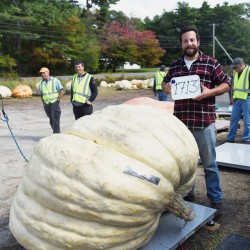
Giant White Pumpkin Seeds...
Pret
3,85 €
SKU: VG 45
Seeds Gallery Com,
5/
5
<h2><strong>Giant White Pumpkin Seeds Lumina (Cucurbita maxima)</strong></h2>
<h2><span style="color: #ff0000;"><strong>Price for Package of 5 seeds.</strong></span></h2>
<p>Lumina was one of the first white pumpkins to reach the market. The size varies from near globe-shaped to flattened globes. The flesh is smooth and tastes great. Exposure to sunlight after maturity will cause blue patches to appear. Stores well.</p>
<p>Color: white</p>
<p>Days To Maturity: 90</p>
<p>Weight: up to 50 kg</p>
VG 45 (5 S)


Giant Onion Seeds -...
Pret
1,95 €
SKU: MHS 31
Seeds Gallery Com,
5/
5
<h2><strong>Giant Onion Seeds - Globemaster (Allium Giganteum)</strong></h2>
<h2><span style="color:#ff0000;"><strong> Price for Package of 10 seeds.</strong></span></h2>
<p>These flowers are absolutely huge! They measure a whopping 6 - 8" wide! This variety of Allium makes an excellent dried flower. They are also a favorite of bees.</p>
<p><strong>Wikipedia:</strong></p>
<p>Allium giganteum, also known as Giant Onion, is a perennial bulbous plant of the onion genus, used as a flowering garden plant, and growing to 2 metres. It is the tallest ornamental Allium in common cultivation. In early to midsummer, small globes of intense purple flower heads (umbels) appear, followed by attractive seed heads. A popular cultivar, 'Globemaster', is shorter (80 centimetres (31 in)) but produces much bigger, deep violet, flower heads (15–20 centimetres (5.9–7.9 in)). Both varieties have been granted the Royal Horticultural Society's Award of Garden Merit.</p>
<p>NAME: Giant Allium ‘Globemaster’</p>
<p>SCIENTIFIC NAME: Allium Giganteum</p>
<p>COLOR: Purple 6 - 8” round flower heads</p>
<p>PLANT SEEDS: Outdoors after frost / Indoors weeks before last frost</p>
<p>BLOOM TIME: Late Spring - Mid Summer</p>
<p>HARDINESS ZONE: 4 - 9</p>
<p>PLANT HEIGHT: 36 - 48”</p>
<p>PLANT SPACING: 12 - 15”</p>
<p>LIGHT REQUIREMENTS: Sun</p>
<p>SOIL & WATER PREFERENCES: Average</p>
<p><strong>Propagation:</strong></p>
<p>Always use sterilized planting soil.</p>
<p>Moisten planting media, place the fine seeds on the soil and cover them lightly.</p>
<p>Stratify the seeds by placing the pot in a plastic bag at approx. 5°C.</p>
<p>After 3-4 weeks place the pot to germination temperature, approx. 15°C.</p>
<p>Within 1-? months the seeds will germinate, germination can be very slow.</p>
MHS 31


Această plantă are fructe uriașe

Semințe de căpșuni uriașe
Pret
2,85 €
SKU: V 1 GS
Seeds Gallery Com,
5/
5
<h2><strong>Semințe de căpșuni uriașe</strong></h2>
<h2><span style="color: #f80000;"><strong><span>Preț pentru pachetul de 100 (0,06g) semințe.</span></strong></span></h2>
<p>Căpșunile, Fragaria ananassa L. Maximus, sunt destul de ușor de cultivat! Sunt perene, rezistente la iarnă și vor prospera în plin soare, atâta timp cât solul este fertil și bine drenat. Plantele sănătoase vor produce o mulțime de fructe de pădure de ani de zile! Căpșunile sunt la fel de mari ca merele! Acest tip „GIANT” standard vă va oferi cea mai mare recoltă! Acești uriași veșnici vor produce pe tot parcursul verii pentru cele mai bune deserturi și gustări!<br><br>Căpșunile au nevoie de lumină pentru a germina și semințele lor nu ar trebui acoperite. Dar practica a arătat că semințele de căpșuni descoperite se usucă foarte repede în timpul germinării. Prin urmare, recomand să acoperiți semințele foarte ușor cu sol însămânțat. După însămânțare și umezire, puteți așeza și un geam pe tava de însămânțare.<br><br>Semințele au nevoie de cel puțin 60 de zile de stratificare</p><script src="//cdn.public.n1ed.com/G3OMDFLT/widgets.js"></script>
V 1 GS (0,06G)





